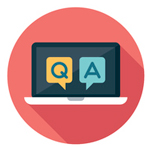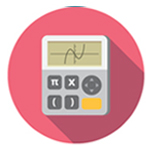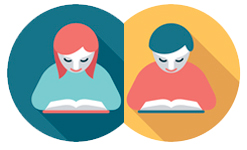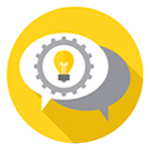[et_pb_section bb_built=”1″ admin_label=”Banner Image Section” fullwidth=”off” specialty=”off” _builder_version=”3.0.51″][et_pb_row background_position=”top_left” background_repeat=”repeat” background_size=”initial”][et_pb_column type=”4_4″][et_pb_image admin_label=”Teachers Banner Image” _builder_version=”3.0.77″ src=”http://dfsme.org/wp-content/uploads/2017/09/dfsme-int-banner.jpg” show_in_lightbox=”off” url_new_window=”off” use_overlay=”off” always_center_on_mobile=”on” border_style=”solid” force_fullwidth=”off” show_bottom_space=”on” saved_tabs=”all” global_module=”829″ animation_style=”slide” animation_duration=”500ms” animation_intensity_slide=”10%” animation_direction=”left” /][/et_pb_column][/et_pb_row][/et_pb_section][et_pb_section bb_built=”1″ fullwidth=”off” specialty=”off”][et_pb_row background_position=”top_left” background_repeat=”repeat” background_size=”initial”][et_pb_column type=”1_4″][et_pb_menu admin_label=”Teachers Menu” _builder_version=”3.0.77″ menu_id=”17″ custom_background_color=”off” background_layout=”light” text_orientation=”left” submenu_direction=”downwards” fullwidth_menu=”off” dropdown_menu_animation=”fade” module_id=”sidebar-menu” saved_tabs=”all” global_module=”825″ /][/et_pb_column][et_pb_column type=”1_2″][et_pb_text admin_label=”Teachers” _builder_version=”3.0.90″ background_layout=”light”]
High-Quality STEM Instruction
High-quality STEM instruction includes the following key aspects:
- Problem-driven lessons
 Effective lessons focus on real-world, relatable problems to which students can productively work to propose solutions.
Effective lessons focus on real-world, relatable problems to which students can productively work to propose solutions. - Hands-on instruction
 High-quality STEM instruction requires active and engaged students. Students should be the main drivers of the learning process, and should be proposing the ideas, as well as generating and testing solutions.
High-quality STEM instruction requires active and engaged students. Students should be the main drivers of the learning process, and should be proposing the ideas, as well as generating and testing solutions. - Multiple correct approaches/solutions
 High-quality STEM teaching should allow for multiple approaches to a problem as well as creative, out-of-the-box solutions. Mistakes and failed attempts along the way should be considered opportunities for deeper learning.
High-quality STEM teaching should allow for multiple approaches to a problem as well as creative, out-of-the-box solutions. Mistakes and failed attempts along the way should be considered opportunities for deeper learning. - Engineering-design thinking
 In solving STEM problems, students should be expected to utilize engineering-design thinking. In this kind of thinking, students identify the problem at hand, research potential solutions, build prototypes, test, redesign, test again, and iterate further as needed, all toward building a functional solution.
In solving STEM problems, students should be expected to utilize engineering-design thinking. In this kind of thinking, students identify the problem at hand, research potential solutions, build prototypes, test, redesign, test again, and iterate further as needed, all toward building a functional solution. - Challenging mathematics and science
 At the base of STEM problems are the mathematics and science skills that students are learning in school and must apply in pursuit of solutions. The mathematics and science being utilized should connect to and extend current coursework, helping students to see the connections between subject areas.
At the base of STEM problems are the mathematics and science skills that students are learning in school and must apply in pursuit of solutions. The mathematics and science being utilized should connect to and extend current coursework, helping students to see the connections between subject areas. - Collaboration
 Big challenges are rarely solved by individuals. High-quality STEM instruction also involves teaching students to work as a productive part of a collaborative team.
Big challenges are rarely solved by individuals. High-quality STEM instruction also involves teaching students to work as a productive part of a collaborative team. - Critical thinking
 Effective STEM lessons require students to analyze information, evaluate designs, reflect on their thinking, synthesize new ideas, and propose creative solutions. All of these skills are vital to building students into independent critical thinkers.
Effective STEM lessons require students to analyze information, evaluate designs, reflect on their thinking, synthesize new ideas, and propose creative solutions. All of these skills are vital to building students into independent critical thinkers.
What is STEM?
How do I add STEM to my classroom?
Where can I find STEM resources?
[/et_pb_text][/et_pb_column][et_pb_column type=”1_4″][et_pb_image admin_label=”Sidebar Image 2″ _builder_version=”3.0.90″ src=”http://dfsme.org/wp-content/uploads/2017/12/dfsme-sidebar-image2.jpg” show_in_lightbox=”off” url_new_window=”off” use_overlay=”off” align=”left” always_center_on_mobile=”on” force_fullwidth=”on” show_bottom_space=”on” saved_tabs=”all” global_module=”1546″ /][/et_pb_column][/et_pb_row][/et_pb_section]
